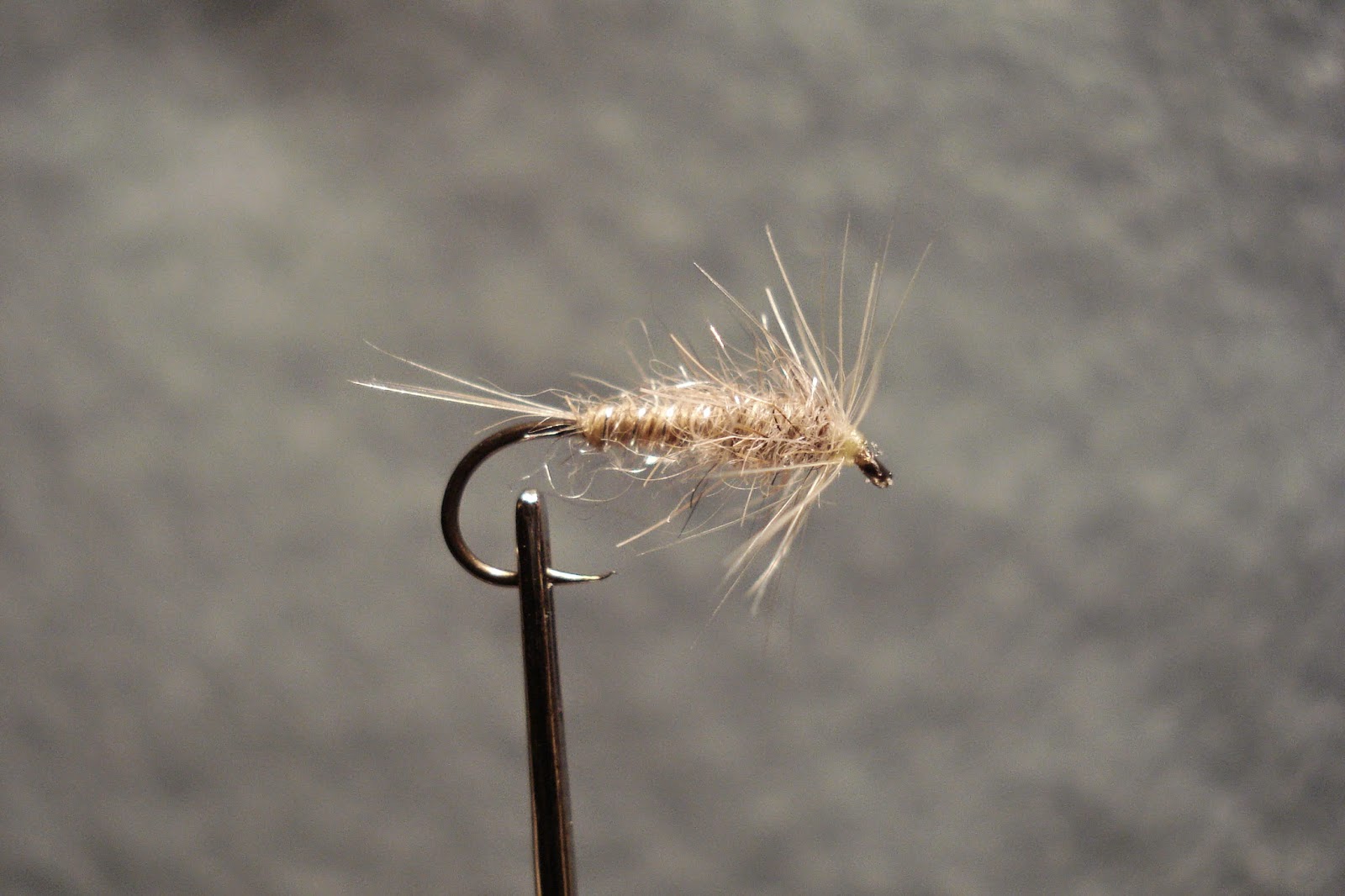Hook:
|
16-18
|
|
Thread:
|
Dark brown
|
|
Rib:
|
Fine silver oval French tinsel
|
|
Abdomen:
|
Blue rabbit underfur
|
|
Hackle:
|
Brown, mottled partridge hackle
|
|
Sylvester Nemes reprints selections from the
letters of Theodore Gordon germane to his study of historical soft hackles in
Two Centuries of Soft-Hackled Flies
(2004). Gordon mentions two, though he gives neither a name. In a letter to G. E. M. Skues dated February 18, 1909, Gordon relayed
some of his experiences with soft hackles: “I have tried the hackles of small
birds and from grouse, woodcock, snipe, etc., but rarely with much success. A
brown, mottled partridge hackle on a light bluish dun body, ribbed with fine
silver twist was quite killing.”
Similarly, in a letter to Skues written on
March 10, 1912, Gordon recalled “a very small fly with mouse colored body and
gray partridge hackle that killed well on slow streams, fished wet.” (This dressing has much in common with Dame Juliana Berner's Donne Flye.)
|
Wednesday, May 20, 2015
Gordon Hackle
Wednesday, May 6, 2015
Pale Watery Dun or Nymph
Hook:
|
14-18
|
|
Thread:
|
Pale primrose
|
|
Tail:
|
Blue dun
|
|
Rib:
|
Silver wire
|
|
Abdomen:
|
Tan hare's ear plus
|
|
Thorax:
|
Dark hare’s ear plus
|
|
Hackle:
|
Pale ginger, one turn tied short
|
|
G. E. M. Skues gives multiple dressings for
Pale Watery Nymphs or duns in various books. In Minor Tactics of the Calk Stream (1910), Skues includes one
dressing for a winged Watery Nymph; in Nymph
Fishing for Chalk Stream Trout (1939), six short-hackled dressings. This
dressing, Pale Watery XVII, is listed in the latter.
“Hook.—No. 16.
Tying Silk.—Cream, waxed with colourless wax.
Hackle.—Palest ginger hen—one turn—short.
Whisk.—Two strands of palest creamy neck feather of cock
grinea-fowl—short.
Rib.—Fine silver wire.
Body.—Abdomen: Pale
rabbit’s Poll.
Thorax: Hare’s poll, or, for a variation, English squirrel’s blue fur.”
Skues notes that he has seen the Pale Watery
Dun “from mid-April to the end of the season and later. I have seen them
hatching in bitter weather when fishing for grayling in December.”
|
James Leisenring includes two dressings for
the Pale Watery Nymph in his Art of
Tying the Wet Fly and Fishing the Flymph (1941). He assigns the following
dressing for the second:
“HOOK 15,16
SILK White, waxed with colorless wax.
HACKLE One turn of a very short honey dun cock
hackle.
TAIL Three strands of very short, soft-blue-dun
cock fibers.
RIB None.
BODY Undyed seal fur or pale buff Australian
opossum fur dubbed lightly at the tail and thicker at the thorax.”
|
 |
| This dressing of (2) below substitutes mourning dove undercoverts for sea swallow hackling and tailing, and it uses naturally yellow raw Gulf Coast Wool. |
Roger Woolley included a pair of simple soft
hackle dressings for the Pale Watery Dun among a list of twelve nymphal, soft
hackled, winged, wet, and dry fly dressings for the Pale Watery Dun in Modern Trout Fly Dressing (1932):
“(1) Body.—Pale ginger fur.
Hackle and Whisks.—Palest blue dun hen.
(2) Body.—Pale watery yellow lamb’s wool.
Hackle and Whisks.—Palest blue dun hen. Or a small feather from
the outside of a sea-swallow’s wing.”
Woolley's second dressing, minus the tail, bears a strong resemblance to the Blae Hen and Yellow. He notes that the Pale Watery Dun “appears
on our streams from May onwards throughout the season, but is most prevalent
in August and September. Under suitable conditions it hatches out in great
quantities, and is a prime favourite with trout, and especially grayling. It
is about the same size as the Iron Blue Dun. This fly and the Blue Winged olives with their spinners are mostly
the cause of the made late evening rise of fish.”
|
Subscribe to:
Posts (Atom)


